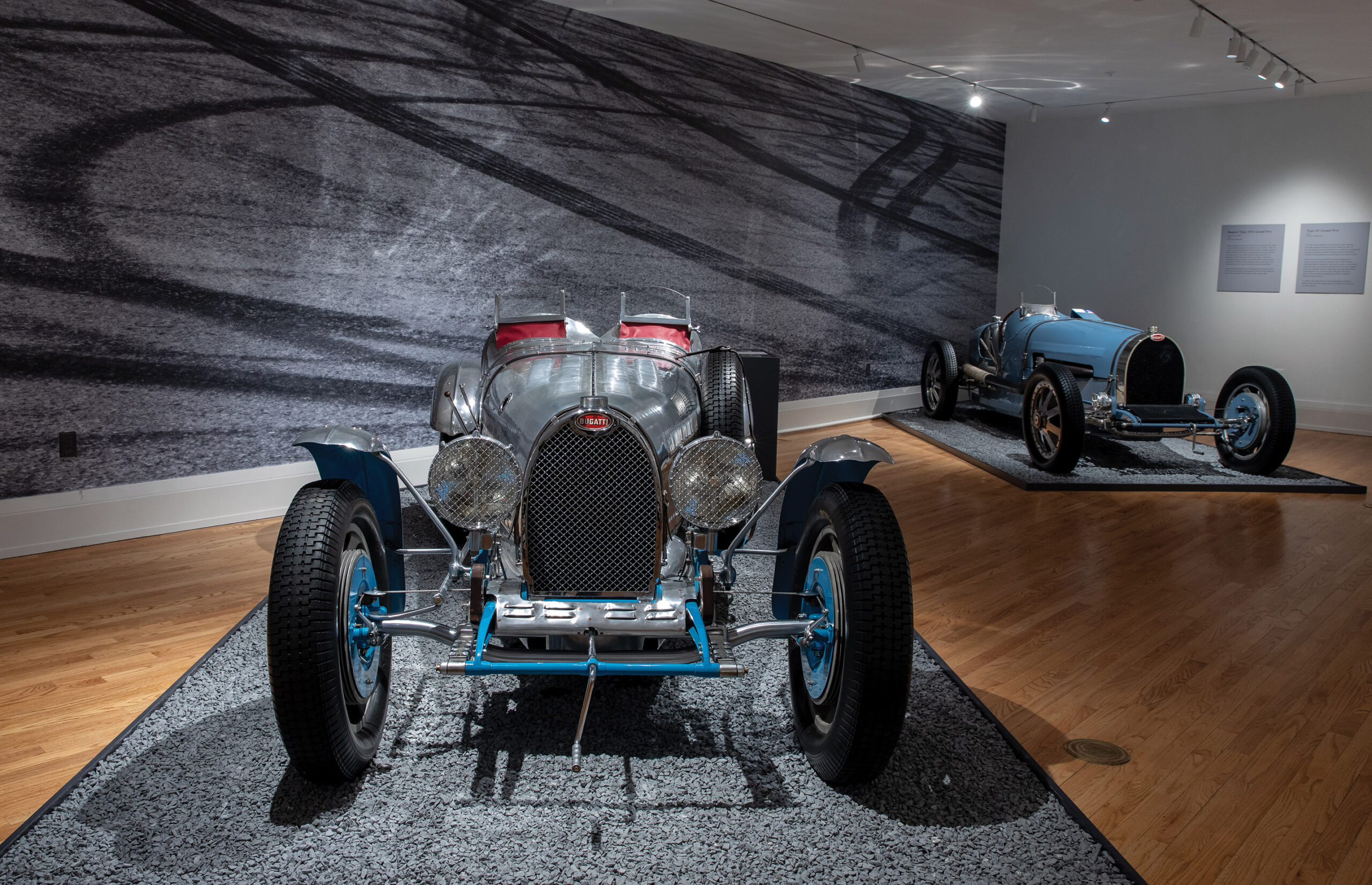
Academy Art Museum pays tribute to the trailblazing Bugatti family in a spectacular exhibition on display through April 13
Photography by Jill Jasuta
Although he famously declared, “Perfection is never reached,” the Italian-born, French-based automobile manufacturer, Ettore Bugatti (1881-1947), pursued it throughout his career. In the years between the First and Second World Wars, the Bugatti name was virtually synonymous with automotive excellence, embodying the speed and dynamism of modernity. But Bugatti always signified more than a machine.
Family patriarch Carlo Bugatti (1856-1940) produced furniture and metalwork of startling originality. His sons inherited their father’s artistic passion but pursued their own paths. Rembrandt (1884-1916) had a tragically brief career as a sculptor of empathetic bronze portraits of animals. Ettore became a celebrated automobile manufacturer. He and his son, Jean (1909-1939), designed cars that were mechanically advanced and visually stunning. “My first ambition,” Ettore said, “was to be a great artist, and so earn the right to bear a name distinguished by my father.”
A highlight of the Academy’s exhibition is work from two private collections formed by fathers and sons. The automobiles belong to an Eastern Shore family whose collecting and care of vintage cars is a shared passion across generations. Awarded prizes at Concours d’Elegance, these vehicles have never been displayed in an art museum.
The sculptures are from the Arsidi Scuderi collection of Lugano, Switzerland. Inspired by patriarch Isidore Scuderi, a sculptor in Italy in the early 20th century, the Arsidi Scuderi family began to collect Rembrandt’s bronzes more than 30 years ago and assembled a fine collection spanning the entire arc of the artist’s career.
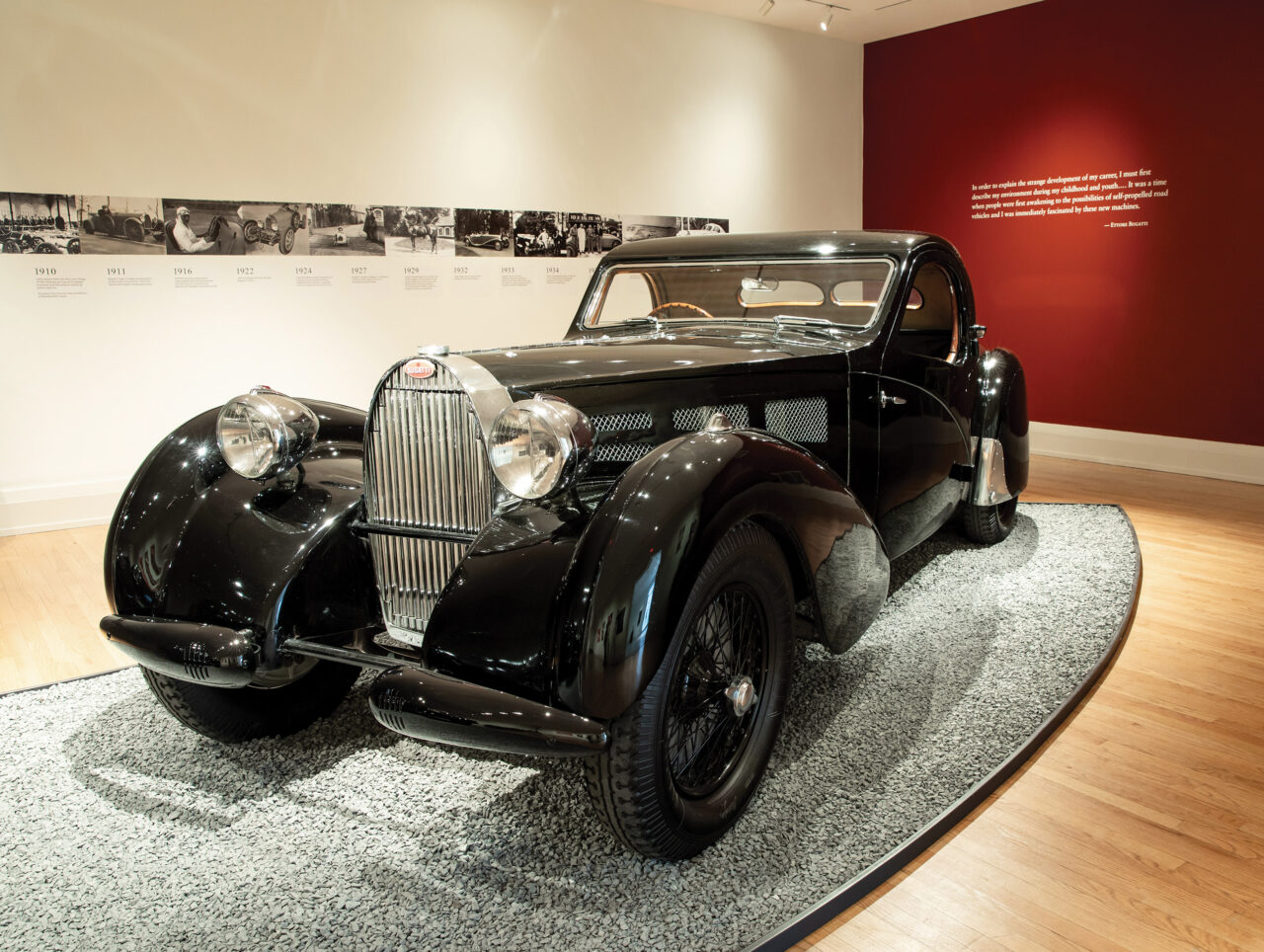
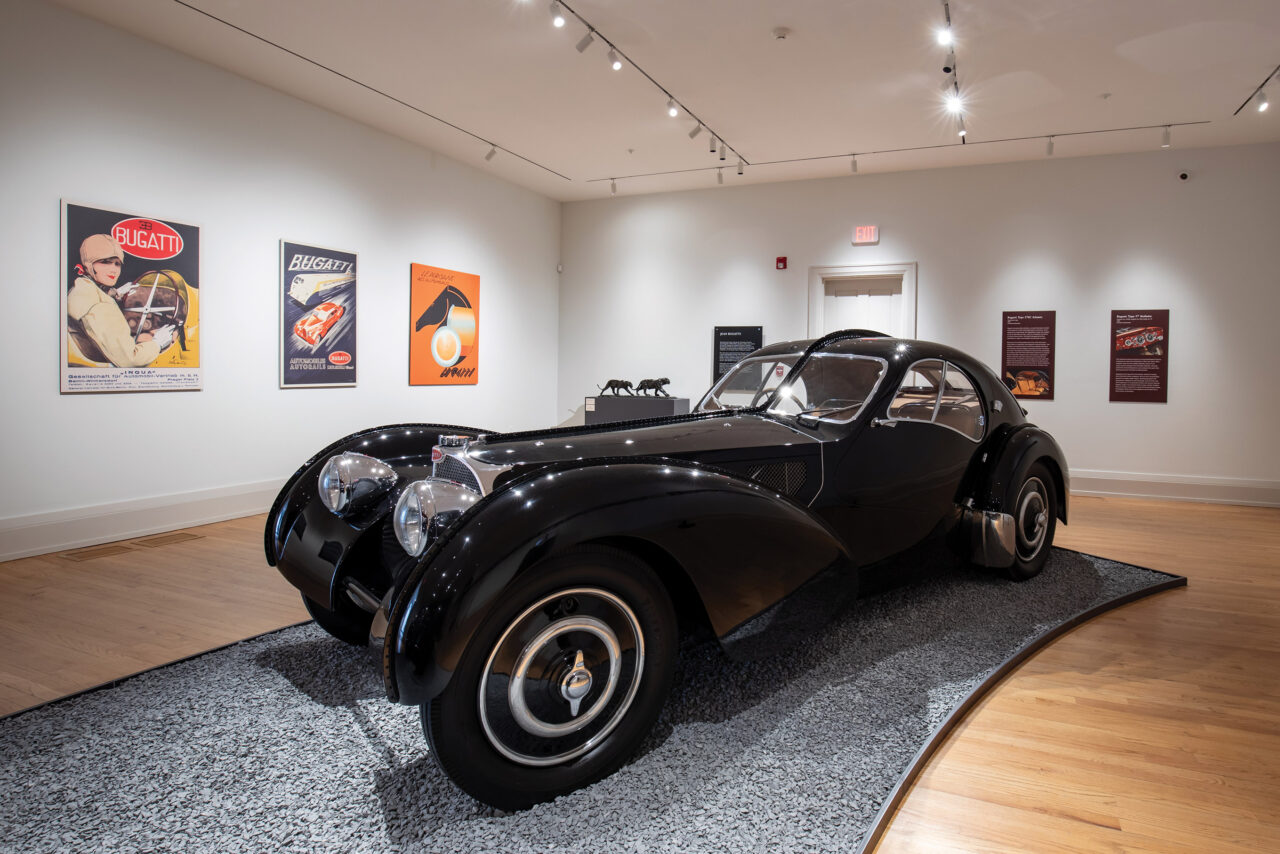
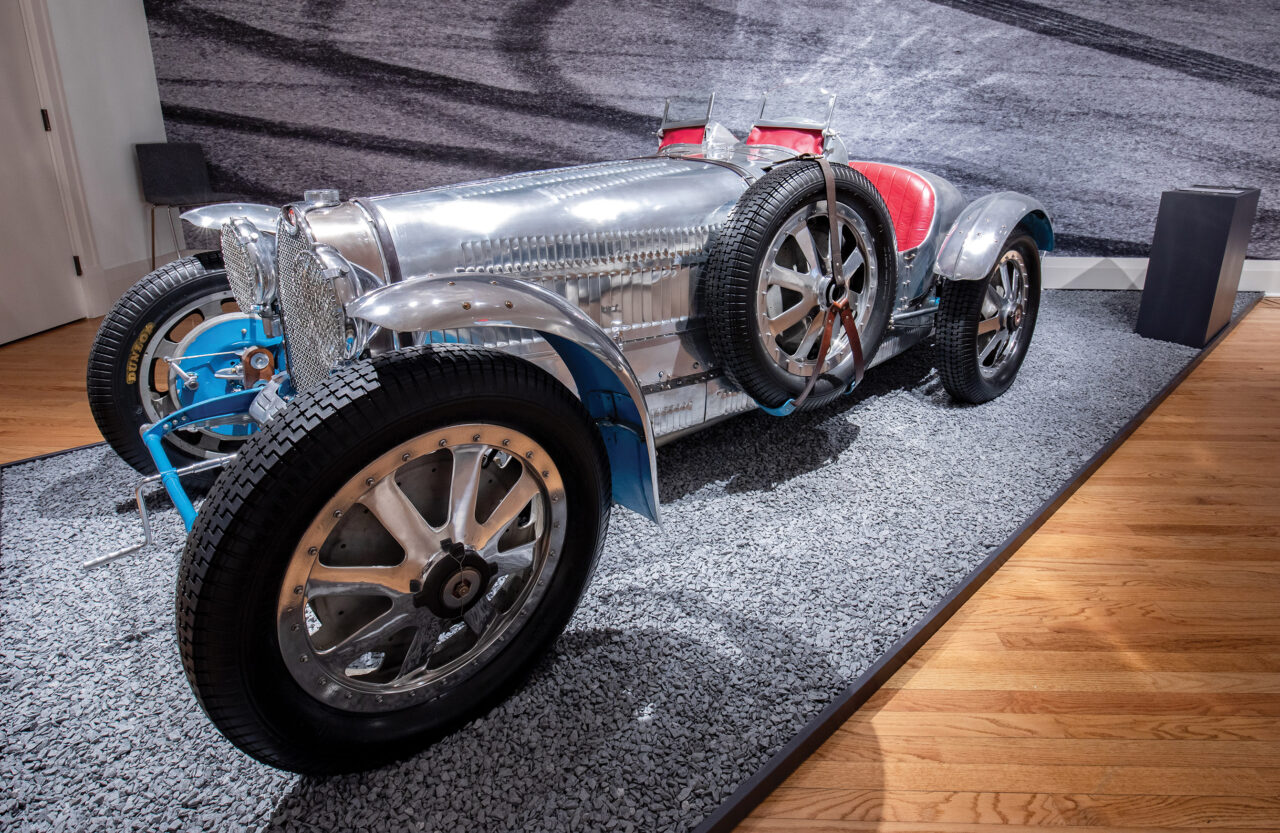
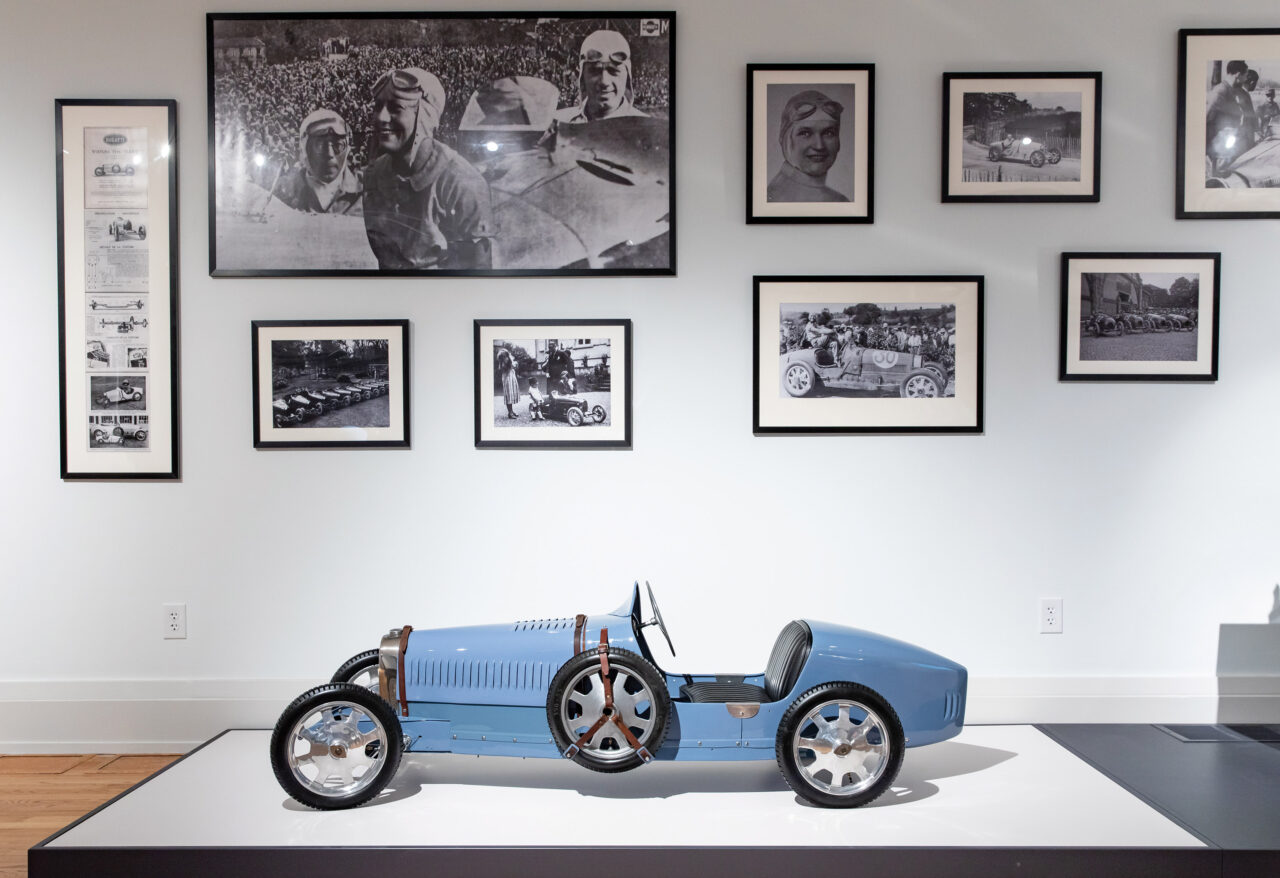
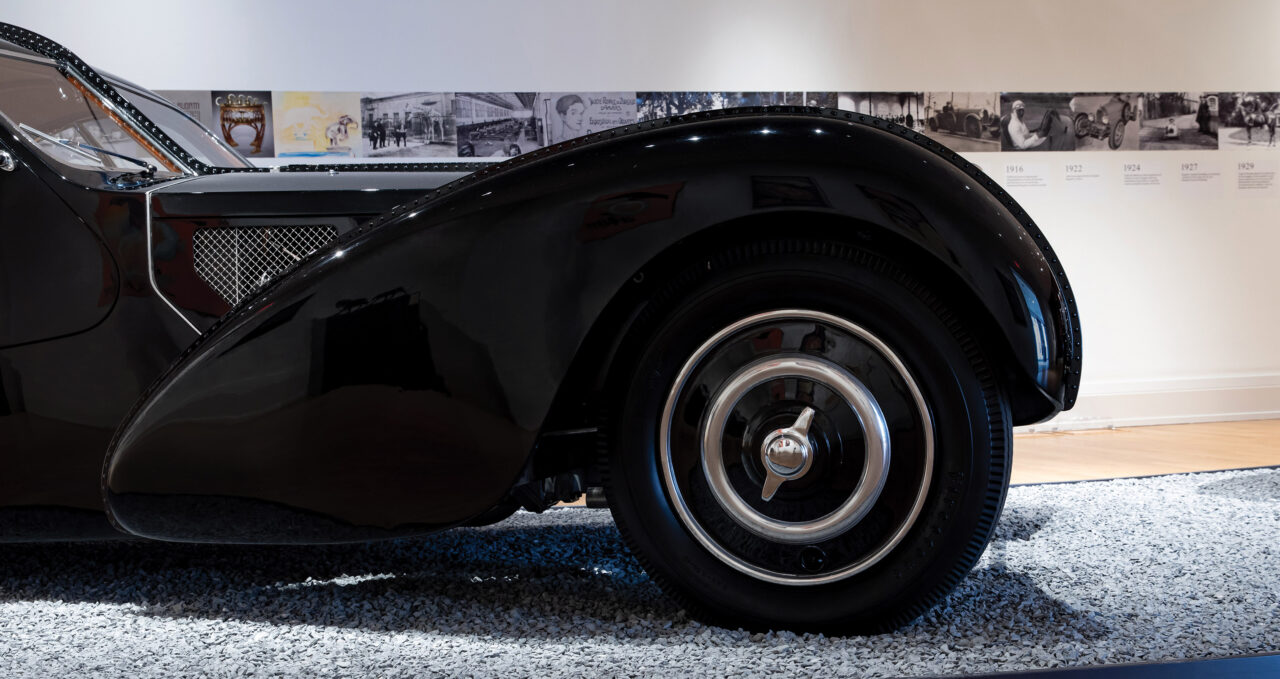
Easton journalist Val Cavalheri sat down with the Honorable John C. North II, a lifelong resident of Talbot County, to learn more about his passion for Bugattis and what Academy Art Museum visitors can expect from the exhibition.
You have an extensive collection of vintage automobiles. What initially drew you to Bugatti?
As an early enthusiast in the 1950s, I had been reading all I could concerning exotic automobiles, and Bugatti seemed to be particularly well-regarded. I was offered a car in Europe, a Type 57 Atalante, which was a particularly handsome body style. The price was $1,200. We purchased the Bugatti sight unseen. We went to New York to pick it up from the dock. We took gas, water and a battery, and miraculously it started up. We drove it home, which would be absurd today, but it came home successfully.
How has your passion for Bugatti evolved over the years?
After acquiring the Atalante, I became better acquainted with the excellence of its design and the finesse of its construction. It became obvious that this car was a work of art. I acquired a racing car, the Type 39, brought to this country by an American serviceman after World War II.
I disassembled it entirely, down to the last nut and bolt. It had been rebuilt mechanically, so it didn’t need mechanical work but did need cosmetic restoration.
What role did your son David play in your restoration projects?
My son and I decided to polish the body of the Type 39 rather than paint it. The body is all aluminum and turned out to be a little gem. Over time, I owned a number of different Bugattis, worked on some, traded some, sold some, and enjoyed the marque. We were fortunate to get some good early cars, particularly with David’s mechanical expertise.

How did you become involved with the Academy Art Museum and the Bugatti exhibition?
I was an early supporter of the Academy Art Museum and a longtime member. I am proud to hold membership card #9! The idea for the exhibition originated with my good friend, the distinguished architect Warren Cox, who was a Museum Trustee and is also a car enthusiast. He suggested that my cars were objects of beauty and should be displayed in a museum. It snowballed from there.
What do you think the Museum will accomplish with the Bugatti exhibition?
I think the museum hopes to accomplish a blockbuster show that is far larger and grander than any other show they have ever done, and I’m happy to contribute to that. I am interested in seeing the cars that I have accumulated over time in a museum setting. Generally, the public appreciates that Bugattis are the most artistic of automobiles.
Are there any Bugattis that you want that are not in your collection?
There are many Bugattis that anyone would like to have. But at my age, I am no longer in an acquisitive mood. We have a good collection as it is and do not anticipate adding or selling. CS
Email: Info@CoastalStyleMag.com
Phone: 410-205-MAGS
Terms of Use
